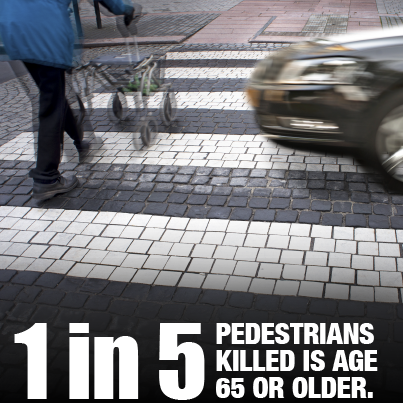AARP Hearing Center
Good Morning Blog Readers! If you've ever been walking through downtown Chicago this blog post is for you...
Chicago is among the safest metro areas in the nation for pedestrians, ranking 44th out of the 51 largest metro areas, a new report released by the National Complete Streets Coalition, a program of Smart Growth America, said.
While many streets across the country are perilous for people walking, hundreds of communities like Chicago are working to make their streets safe and welcoming for people on foot. In recent years, scores of communities have begun to redesign roads as “complete streets,” adding sidewalks and bicycle lanes, reducing crossing distances and improving crosswalks. Such design features have helped make walking safe and comfortable for everyone.
“Older persons account for one in every five pedestrian fatalities and have the greatest fatality rate of any population group,” said AARP Executive Vice President Nancy LeaMond. “America’s state, federal and community leaders should focus on making our streets safer – which will benefit everyone, including thegrowing number of older Americans.”
Though the report found that Chicago is safer when compared to other metros across the country, a total of 1,165 pedestrians were killed from 2003 to 2012 — an unacceptable number no matter Chicago’s ranking. Continuing to invest resources in making our streets safe for all users is key to ending these preventable deaths.

In addition to ranking America’s major metropolitan areas according to a Pedestrian Danger Index to assess how safe pedestrians are while walking, the report, Dangerous by Design presents data on pedestrian fatalities and injuries in every U.S. metro area, state, and county. The report also includes an interactive map showing the locations where people walking have been fatally struck by the driver of a vehicle.
“We applaud Chicago’s efforts to design safer streets for people of all ages,” said Bob Gallo, AARP Illinois State Director. “However, we must remain vigilant and continue to create new and innovative ways to ensure that Chicago roadways are accessible and safe for pedestrians of all ages.”
The majority of pedestrian deaths occur on roadways that are dangerous by design —engineered and operated for speeding traffic with little to no provision for the safety of people walking, biking or using public transit. Sadly, older adults, children and minorities are the most at risk while walking, dying in disproportionate numbers.
“We are allowing an epidemic of pedestrian fatalities, brought on by streets designed for speed and not safety, to take nearly 5,000 lives a year; a number that increased six percent between 2011 and 2012,” said Roger Millar, Director of the National Complete Streets Coalition. “Not only is that number simply too high, but these deaths are easily prevented through policy, design, and practice. State and local transportation leaders need to prioritize the implementation of Complete Streets policies to improve safety and comfort for people walking.”
The federal government sets the tone for a national approach to safety and Congress can address this critical issue by passing the Safe Streets Act as it renews the transportation law. States are then ultimately responsible for protecting their residents and visitors and reducing the number of people who are killed or seriously injured while walking. State governments and agencies can take a number of actions to improve pedestrian safety, starting with adopting a strong Complete Streets policy and following a comprehensive action plan to ensure the streets are planned and designed for the safety and comfort of people walking.
To view the full report, please click here































































